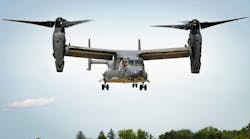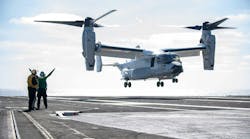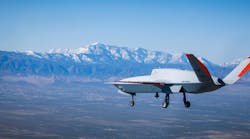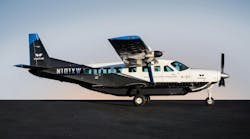Oct. 21--LOWER TOWNSHIP -- Rio Grande farmer Ed Wuerker was just a boy when World War II torpedo bombers from Naval Air Station Wildwood practiced hitting dummy targets laid out on farm fields.
Wuerker, 74 and pretty much retired now with his sons running the farm, remembers marveling at the planes overhead. A crew chief from NASW rented a room from his father, and he heard plenty of stories. He even remembers one bomber crashing near where the present-day Erma Deli is located.
Wuerker really wanted to fly one.
But he was too young for the war. And later, when he thought about joining the Air Force or Navy and becoming an aviator, his dad needed him on the farm.
Still, the urge to fly a World War II torpedo bomber never quite left him.
"I saw them flying around, and it blossomed from there. The urge to do things just grows," Wuerker said.
Over the years, Wuerker learned to fly, joined the Civil Air Patrol and even built his own helicopter. That just fed his childhood urge to fly a World War II torpedo bomber.
He finally did something about it. In 2005, Wuerker found a TBM Avenger for sale, the same type of torpedo bomber used for training at NASW during the war. He plunked down $60,000 and bought it. It has taken eight years to restore and to get the FAA approvals for the plane and his own certifications needed to fly it, but Wuerker recently got it airborne for the first time since it was used to fight forest fires in Canada.
He said he finally got the feel for what "these kids" -- the young men who trained at NASW, 42 of whom lost their lives in crashes around southern Cape May County between 1943 and '45 -- went through.
"It's hard to describe the feeling when most people tell you don't do it, you can't do it," Wuerker said. "When you give it full throttle, there's nothing to do but follow it. I flew a Piper Cub the day before, which is light and very agile. The next day I'm in the heaviest World War II single-engine plane out there."
It was everything Wuerker expected it to be. Just starting up the plane stirs something within him.
"I love that sound. It's a sweet sound. It's the sound of freedom," Wuerker said as he and flying buddy Ott Clermont started the bomber up on a recent day at the Cape May Airport.
It starts with a loud pop and then smokes a bit as the 14-cylinder Wright 2600 Cyclone engine heats up. It's very loud.
"That's just one. You can only imagine what a squadron group of these would sound like," Wuerker said.
It's a sound the enemy must have feared, as the TBM Avenger registered impressive numbers during the war, including the destruction of 53 submarines, 500 aircraft, 20 freighters and several warships. This was the plane President George H.W. Bush flew combat missions in, getting shot down and being fished out of the Pacific so he could go on to become a president.
Wuerker's plane has no war history. It was one of 7,546 TBMs built by General Motors at a plant in Trenton, but it came online in March 1945, as the war was winding down. It was assigned to a war group and was in San Diego when the war ended.
The plane somehow found its way to Canada, where TBMs were being used to spray pesticides and fight forest fires. It still has the 600-gallon tank in it used to hold water to drop on fires.
Wuerker dressed up the fuselage with his wife's name, Suzanne, but he hasn't done much cosmetic work yet. He has torn the plane apart and put it back together to receive the all-clear from FAA inspectors.
"Fly it must. Shine it may," is how Wuerker described his approach.
The Canadians modified it to carry water. The gun turrets are gone, as are the bomb-bay doors. It has a different hydraulic system.
It may be far from original, but it is still flying history. About 10,000 TBMs were made but only a few survive. NASW also got one from Canada that is on display at the museum but doesn't fly.
"I don't think there are 35 left, with maybe 12 flying," Wuerker said.
Accustomed to running heavy farm equipment, Wuerker has quickly gotten used to the machine, although he noted it wasn't possible to train on one. He trained on other similar planes.
"I had to fly a T-6 (trainer) as a necessary step up to fly it. It's hard to get training time on a TBM," Wuerker said.
One of the hardest things to do is land it, but at least he doesn't have to drop in on an aircraft carrier. He keeps the TBM, appropriately, at the NASW Museum so people can see it when he isn't flying it.
"It's like landing a brick in a paper plate," joked Bruce Fournier, the chief operating officer at the museum.
Wuerker said taking off in an airplane is the second greatest thrill.
"The first greatest thrill is landing one," he said.
It's not a cheap hobby. Wuerker notes the TBM burns about 1.1 gallons of 100-octane gasoline per minute. And that gas, he notes, no longer costs 10 cents per gallon. But on nice clear days with the right headwinds he can be seen out flying. He can also be heard.
"My friends keep saying I heard you flying. I let them know, that's the sound of freedom over Cape May County," Wuerker said.
Contact Richard Degener:
609-463-6711
Copyright 2013 - The Press of Atlantic City, Pleasantville, N.J.




